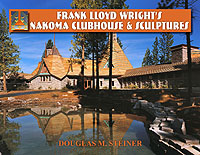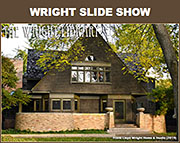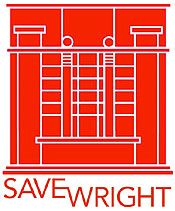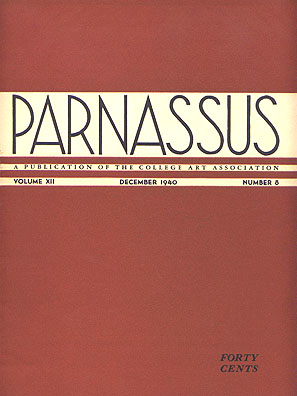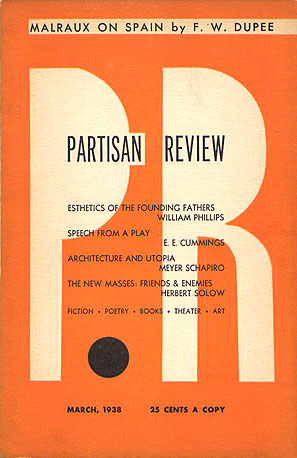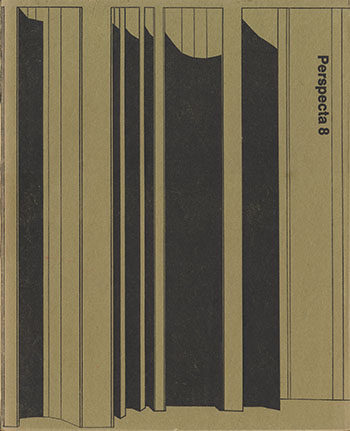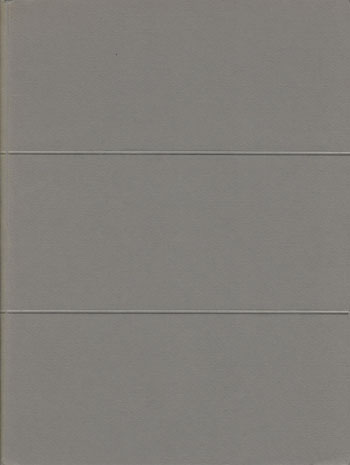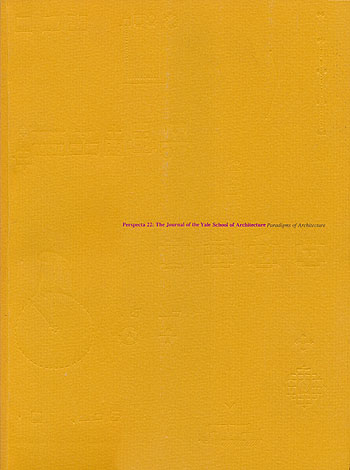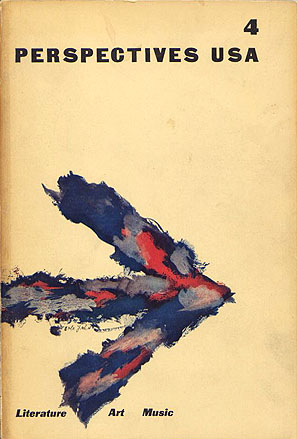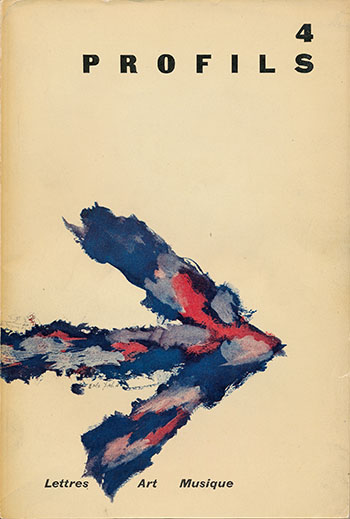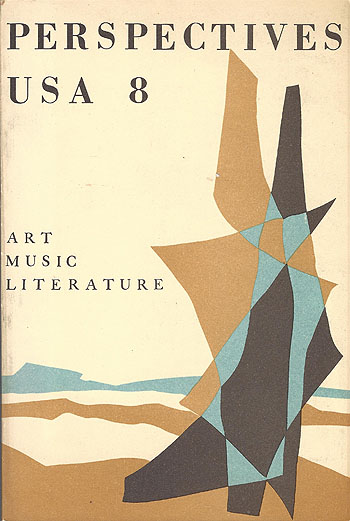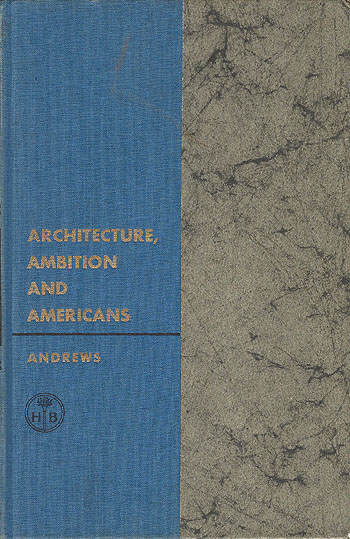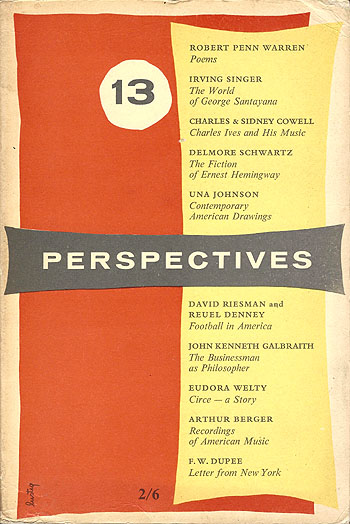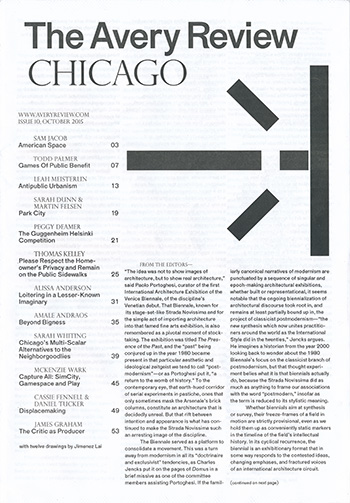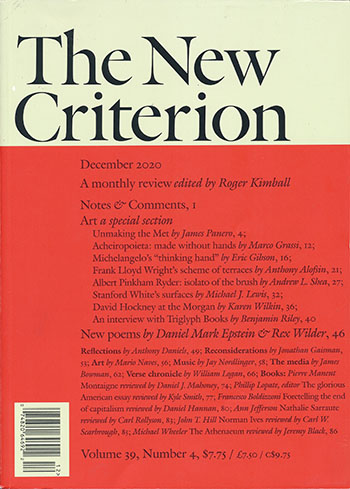
SUPPORT THE
WRIGHT LIBRARY
PROCEEDS FROM EVERY SALE GOES TO SUPPORT THE WRIGHT LIBRARY.
CLICK TO ORDER.
WE PROUDLY SUPPORT THE FRANK LLOYD WRIGHT FOUNDATION

WE PROUDLY SUPPORT THE FRANK LLOYD WRIGHT BUILDING CONSERVANCY
WE PROUDLY SUPPORT FALLINGWATER
AND THE WESTERN PENNSYLVANIA CONSERVANCY

PUBLICATIONS NEW MASSES PARNASSUS PARTISAN REVIEW PERSPECTA PERSPECTIVES THE AVERY REPORT THE NEW CRITERION NEW MASSES Date: 1940
Title: New Masses - December 17, 1940 (Published Weekly by Weekly Masses Co., New York City)
Author: Cooper, Isabel
Description: “The Art of a Master Builder. Frank Loyd, Wright's frontier of the new architecture. A commentary on his current exhibition at the Museum of Modern Art.
Frank Lloyd Wright, Richardson, and Sullivan are modern American architecture's trinity. For fifty years, Wright's fertile invention has ceaselessly evolved styles, methods, and concepts. A generation before the "International Style's" cubical formula captured the twenties, Wright gave the Horizontal-Ten-denz superb esthetic expressions in his "prairie houses."
"He is a great American, as the Museum of Modern Art describes him in the exhibition on view till Jan. 5, 1941.
The character of his greatness, unfortunately, is not made clear in the exhibition. It is an archive of his oeuvre–hundreds of uncatalogued items, labeled badly or not at all, with discrepancies of date and exaggerated claims, notably the "firsts" credited to the atelier Wright. Floor plans, cross-sections, perspective drawings, renderings, models, photographs, all have historic value. The exhibition does not, however, organize them into a progression of historic forces. It simply plumps down contents of files, drafting-table drawers, etc., and you can take your pick.
Wright came at the high tide of post-Civil War expansion. Crystal Palace, Bessemer, Jenney in Chicago- step by step, technics prepared for steel frame construction and the skyscraper. Wright used what he needed from technology notably the cantilever principle employed in Tokyo's Imperial Hotel, in plans for a cantilever skyscraper never built, and in such domestic applications as the Kaufmann Bear Run house and the Sturges Los Angeles house...”
Includes a portrait of Frank Lloyd Wright and a photograph of his work. Original cover price 15c.
Size: 9.5 x 12.5
Pages: Pp 28-2
S#: 0531.105.0523PARNASSUS Date: 1940 Title: Parnassus - December 1940 (Published monthly from October to May by the College Art Association, New York)
Author: Brown, Milton Author: Hitchcock, Henry Russell Jr. Description: Exhibition Review: “Frank Lloyd Wright’s First Fifty Years.” MOMA, New York, Nov 13 - Jan 5, 1941. Original cover price $0.40. (Sweeney 506) Description: “Wright’s influence abroad.” If America is no longer architecturally in debt to Europe, the credit is due to one man and to one man along, Frank Lloyd Wright. Review of Wright’s work published in European books and periodicals. Includes five photographs. Original cover price $0.40. 9 x 12. (Sweeney 513) Size: 9 x 12. Pages: Pp 37-8 Pages: Pp 11-15 S#: 0506.00.0906 S#: 0513.00.0906
PARTISAN REVIEW Date: 1938 Title: Partisan Review - March 1938 (Published monthly by Partisan Review, New York)
Author: Schapiro, Meyer
Description: Book Review: “Architect’s Utopia.” “Architecture and Modern Life.” By Baker Brownell and Frank Lloyd Wright. Harper & Bros. $4.00. Original cover price $0.25. (Sweeney 411)
Size: 6 x 9.25
Pages: Pp 42-47
S#: 0411.00.0806
PERSPECTA Date: 1963
Title: Perspecta 8 - The Yale Architectural Journal - 1963 (Published by The School of Art and Architecture of Yale University, New Haven, Connecticut)
Author: Kaufmann, Edgar Jr.
Description: Frank Lloyd Wright and the Fine Arts. Frank Lloyd Wright spent the last decade of his life blasting away at (among other things) modern art; at the same time he was engaged in a long and eventually successful campaign to build the Solomon Guggenheim Museum for modern art. On these grounds he is accused of designing the museum to show the superiority of his own art - architecture - over the arts of painting and sculpture. Now Wright dearly loved a fight and, even more, a paradox; but it never occurred to him to betray a professional trust. When he accepted a commission it was not to monumentalize himself; else he would have aimed his whole career differently. His original clients for the museum, Solomon Guggenheim and Hilla Rebay, had a specialized, didactic, and developmental program consonant with what Wright considered the hopeful aspects of modern art. With a change of clients after Solomon Guggenheim's death came the clash of purposes which transformed the Guggenheim Museum building, as it opened, into a half-thing. Even so, it has proved astonishingly vital, and in some respects is now being used more nearly as conceived... Includes eight photographs and illustrations. Original cover price $3.00 (Sweeney 1552)
Size: 9.5 x 11.75
Pages: Pp 37-42
S#: 1552.00.0123Date: 1980
Title: Perspecta 16: The Yale Architectural Journal - 1980 (Published by The MIT Press, Cambridge and London) (Published in Modern Architecture and Other Essays, Scully, Levine, 2003, p.170-197)
Author: Scully, Vincent
Description: A talk given in Oak Park, Illinois on 7 September 1977 under the auspices of the Frank Lloyd Wright Foundation and the Yale Club of Chicago. "Frank Lloyd Wright and the Stuff of Dreams. It should be said at the outset that this article is about Wright and Freud. The fact that it backs into that topic and at intervals backs away into that topics and at intervals backs away from it is due in part to its original conception, which was as a general talk about Wright’s early work to be given in Oak Park, and for which the central theme emerged only during its preparation..." Includes 75 photographs and illustrations.
Size: 9 x 12
Pages: Pp 8-31
ST#: 1980.35.0716Date: 1986
Title: Perspecta 22: The Journal of the Yale School of Architecture. Paradigms of Architecture. 1986. (Published by Rizzoli International Publication, Inc. New York. Number of copies printed: 3000)
Author: 1) Rudolph, Paul 2) Scully, Vincent 3) Perkins, John; Rosenblatt, Paul; Sage, Jennifer
Description: 1) "Excerpts From a Conversation... I was twelve or fourteen when I first saw a Frank Lloyd Wright house. That was in Florence Alabama. I forget now how I knew about this house, but I did, so I got my parents to drive me over... I have probably told you about the piano hinges and cantilevered roof, no? The cantilevered carport roof, I suppose, was about eighteen feet. I've never seen anything like that. Well I was completely delighted with the whole idea that this would hold itself up, and I didn't understand it at all. There it was. I always thought the car looked a little funny, but I loved the roof... I regard him as the greatest American architect. I feel he is, to a large degree, if not misunderstood, at least the implications of his work have not even begun to be explored... Wright’s interest in natural light is, I believe, much more to the point than any of the International Stylists, Including Le Corbusier..." Includes an illustration of the Masieri Memorial Building, and photographs of the Rosenbaum House (1) and Taliesin West (1).
2) "Unity Temple and the A & A. Several members of the Frank Lloyd Wright Home and Studio Foundation in Oak Park have described Paul Rudolph's emotion when he first saw Unity Temple. He was moved to a sincere and selfless admiration, to that rarest and purest of human emotions, and objective aesthetic reaction. As so often happens with all our most generous impulses, this feeling was to prove his undoing. He tried to shape another building on the foundation of his admiration, but the uses and scale of the structure had to be very different; the result, while as magnificent as the charge of the Horse Guards at Austerlitz, Building before it. Most of all, the Larkin Building was of the multi level scale that Rudolph required; but unfortunately, it was no longer among us..."
3) "Drawings and Photographs of Unity Temple. These drawings of Unity Temple are the result of our desire to document an American building which, over the years, has been much admired yet never fully made available to students of architecture. A series of visits to Oak Park and subsequent periods of drafting both in New Haven in New York, produced this collection of drawings. It is our hope that they will reveal the richness and quality we found in the building." Includes 53 photographs and illustrations.
Size: 9 x 12.
Pages: 1) Pp 102-107 2) 108-109 3) 142-187
ST#: 1986.95.0120
PERSPECTIVES Date: 1953 Title: Perspectives USA No. 4 - Summer 1953 (Published quarterly by Intercultural Publications Inc., Brooklyn, NY)
Author: Andrews, Wayne
Description: “Looking at the Latest of Frank Lloyd Wright. It would be silly to say that Frank Lloyd Wright, whose eighty-fourth birthday fell on the eighth of last June, is the most unpredictable of American architects, for if you think over all he has accomplished in his long career, you will probably agree that he is a highly predictable artist. The thing that is astonishing, and that makes his most recent work so remarkable, is that this octogenarian has succeeded, year after year, in surprising even his most ardent admirers. Unlike most of his contemporaries, this native of Richland Center, Wisconsin, has never seen anything to be proud of in repeating an experiment successfully performed...” Includes fourteen photographs by Wayne Anderson of V.C. Morris Gift Shop; Florida Southern College; Johnson Wax Company; Taliesin West and First Unitarian Meeting House of Madison. Original cover price $1.50. 6 x 9 (Sweeney 927)
Size: 6 x 9
Pages: Pp 115-125
S#: 0927.00.1106
Date: 1953
Title: Profiles (Perspectives) No. 4 - Summer 1953 (Published quarterly by Intercultural Publications Inc., Paris, New York)
Author: Andrews, Wayne
Description: “Frank Lloyd Wright is Eighty-Four Years Old. It would be absurd to say that Frank Lloyd Wright is among American architects the one who reserves the greatest surprises for us; Frank Lloyd Wright celebrated his eighty-fourth anniversary on June 8 and as long as we think about everything he has accomplished during his long career, we will probably admit that we know perfectly what this artist is capable of. What is truly wonderful and what makes his recent works so extraordinary is that this octogenarian has managed, year after year, to surprise even the most fervent of his admirers. Unlike most of his contemporaries, this child from Richland Center (Wisconsin) never admitted that we could draw some pride in the repetition of a successful experience...” Includes fourteen photographs by Wayne Anderson of V.C. Morris Gift Shop; Florida Southern College; Johnson Wax Company; Taliesin West and First Unitarian Meeting House of Madison. Original cover price 150 Francs. (Sweeney 927)
Size: 6 x 9
Pages: Pp 91-101
S#: 0927.00.1122Date: 1954
Title: Perspectives USA No. 8 - Summer 1954 (Published Quarterly by Intercultural Publications Inc., Brooklyn, New York)
Author: Alex, William
Description: "The Skyscrapers: USA." Frank Lloyd Wright is included in the article. "During the past seventy years a third grade structural system has taken it's place besides the post and lintel and the arch as a determining factor in the history of architecture... The apartment house project designed in 1929 by Frank Lloyd Wright for St. Marks in-the-Bouwerie, New York... In plan, structure, and visual effect, the project demonstrated once more Wright’s complete originality and freshness of approach..." Includes 41 plates, of which four are Wright’s. 20: St. Marks in-the-Bouwerie; 31-33: Johnson Wax Laboratory Tower.
Size: 6 x 9
Pages: Pp 86-103
S#: 1045.44.0318Date: 1955
Title: Architecture, Ambition and Americans. A history of American architecture, from the beginning to the present, telling the story of the outstanding buildings, the men who designed them and the people for whom they were built. (Hard Cover) (Published by Harper & Brothers, New York)
Author: Andrews, Wayne
Description: Firsts published in 1947. Andrews published many articles in the 1940-50s. Harper’s Bazaar - July 1948; Saturday Review - November 14, 1953; Perspectives USA No. 4 - Summer 1953. Chapter 6, H: The Chicago Story. "Young Frank Lloyd Wright. Wright is credited, even by his enemies, with being the greatest architect of the twentieth century. He is the greatest artist to emerge from the Middle West, the only one who may be said to have conquered Chicago. One reason for his success is that he had always known what he wanted. ‘You’ve got to have guts to be an architect!’ he has said. ‘People will come to you and tell you what they want, and you will have to give them what they need...’ " 17 illustrations and photographs by Wayne Andrews include: Coonley (2); Bradley (1); Lloyd Lewis (1); Taliesin (1); Fallingwater (2); Johnson Wax Co. (2); V. C. Morris (2); Florida Southern College (1); Unitarian Meeting House (2); Taliesin West (3). (Fifth Edition)
Size: 6 x 9.5
Pages: Pp 315
S#: 1092.95.0816Date: 1955 Title: Perspectives No. 13 - Autumn 1955 (Published in Great Britain by Hamish Hamilton Ltd., London, for International Publications Inc. of New York.)
Author: Gutheim, Frederick
Description: Book Report: "The Natural House," Wright. 1954, Horizon Press, $6.50. "Scissors and paste for two thirds of the way, the rest is a series of notes on the design of houses, notes which go into practically everything the architectural client may want to know... Wright is now eighty-six, and has become a sort of architectural Father William... Wright, of course, is the antithesis of Gropius. He abhors industrialism, except as it puts new and fascinating tools in the hands of the architect... The Wright of this book is the authentic one... Wright, the unbusinesslike, romantic, difficult volcano which periodically erupts in Wisconsin, has been taken to the bosom of the American people..." Includes photographs of Alvin Miller (2) and Boomer residences and one illustration of the Guggenheim. Original British cover rate 2 pounds,
Size: 6 x 9
Pages: Pp 150-155
S#: 0998.01.0915
THE AVERY REVIEW Date: 2015
Title: The Avery Review - October 2015 (Published by the Trustees of Columbia University, New York)
Author: Kelly, Thomas
Description: Please Respect the Homeowner's Privacy and Remain on the Public Sidewalks: Frank Lloyd Wright's Oak Park Houses and First Floor Plan Drawings.
Thirty minutes outside of Chicago is an affluent neighborhood called Oak Park. To find it from the Loop you can take the "L" and go west on the Green Line toward Harlem. Cut your walk in half and get off at the Harlem/Lake station (not the Oak Park station). Now find your way to Forest Avenue and walk north for about fifteen minutes. At the corner of Forest and Chicago Avenues turn right and you will have arrived at our point of departure-the back entrance to the once home and studio of the prolific Wisconsin-born architect Frank Lloyd Wright. Peruse the bookshop, once a garage, for a moment. Our tour will start momentarily.
In fact, the tour started back on Forest Avenue. While you were carefully following my directions, you missed the front door to Frank's house. Masking the entryway is one of Frank's favorite games and it happens often throughout his early residential work. Your docent, one of the 650 volunteers employed by the Frank Lloyd Wright Trust, reminds you of this hide-and-seek processional as he leads vou back to where.
Includes 16 floor plans of houses in Oak Park designed by Frank Lloyd Wright.
Size: 11.5 x 16.5
Pages: Pp 25-30
ST#: 2015.50.1224THE NEW CRITERION Date: 2020
Title: The New Criterion - December 2020 (Published monthly by The Foundation for Cultural Review, Inc., New York)
Author: Alofsin, Anthony
Description: “A scheme of terraces. When the Arizona Biltmore Hotel opened in February 1929, Frank Lloyd Wright unexpectedly ran into Harold McCormick. The chance meeting resulted in one of Wright's more unusual unexecuted designs, one that eventually influenced others. Twenty years earlier, Wright had designed a grand, unbuilt estate on the edge of Lake Michigan for McCormick and his first wife. But in Arizona in 1929, McCormick was in the company of a young woman called Elizabeth Noble. Wright was accompanied by Olgivanna, his new wife and the mother of their young child. Having younger women on their arms momentarily bonded the men: Wright was sixty-one, McCormick fifty-six; Olgivanna was thirty, Elizabeth twenty-six.
“No doubt neither man discussed Edith Rockefeller, McCormick's first wife, nor their major project that she had blocked. The couples parted, and Wright never mentioned the encounter in his autobiography or his other published writings, but it had repercussions.
“Harold Fowler McCormick was the second son of Cyrus McCormick, the inventor of the McCormick Reaper. Rich and privileged, he graduated from Princeton and became vice president of the family company. He liked racquet sports, saddle horses, and opera. He wore custom-made suits from London and...”
Original cover price $7.75.
Size: 7.25 x 10
Pages: Pp 21-26
ST#: 2020.24.0424
HOME ARTIFACTS AUDIO BOOKS PERIODICALS PHOTOS POSTCARDS POSTERS STAMPS STUDIES ASSISTING ABOUT SLIDE SHOW To donate or pass on information, comments or questions:
steinerag@msn.com
©Copyright Douglas M. Steiner, 2001, 2025
